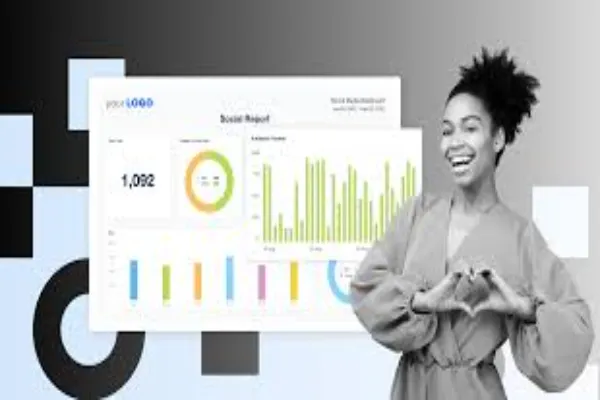What Brands Get Wrong About Influencer Metrics (And How to Fix It)

In an age where algorithms shift daily and audiences consume content across dozens of platforms, it’s no surprise that social media partnerships often become a guessing game. Whether you’re promoting a beauty product or operating a niche service that helps users find Asian wife matches, misreading performance data can derail your campaign goals quickly.

Many brands chase metrics that look impressive on the surface but fail to translate into real engagement, trust, or conversions. Misreading these numbers doesn’t just waste budget — it weakens your long-term marketing foundation.
4 Common Mistakes Brands Make With Influencer Data
When a campaign doesn’t perform as expected, it’s tempting to blame the creator, platform, or audience. In reality, the issue usually begins with how influencer value is assessed. Below are four mistakes brands often make when interpreting influencer metrics — errors that undermine success from the start.
1. Obsessing Over Follower Count
One of the oldest and most persistent errors is treating follower count as the ultimate indicator of influence. A creator with 500,000 followers may look more appealing than one with 25,000, but raw numbers mean very little without context.
Large followings often include inactive users, bots, or followers outside your target market. Worse, creators can easily inflate their numbers through paid promotions or follower-buying schemes. Without engagement to support that audience, you’re throwing money at reach that doesn’t convert.
2. Equating Likes With Conversions
High like counts suggest people care about the content. But likes rarely lead to action. A creator may get thousands of likes per post but drive little traffic to your landing page or product link. Likes are passive interactions often given without much thought.
Focus instead on metrics that reflect true engagement and intent:
- Click-through rate (CTR): Measures how many people visited your link or landing page.
- Share count: Indicates users find the content worth sharing, which expands reach.
- Comments-to-likes ratio: Reveals active user engagement beyond scrolling.
- Conversion rate: Tracks how many users completed a desired action, such as signing up or purchasing.
These metrics provide a clearer picture of audience investment and campaign effectiveness.
3. Ignoring Platform-Specific Context
Each platform has its own ecosystem. Engagement on TikTok looks different from YouTube. Instagram Reels serve a different function than Stories. Evaluating creators across platforms using the same performance yardstick leads to flawed comparisons.
For instance, YouTube subscribers tend to be more invested due to long-form content, while TikTok followers may come from a single viral post. Without accounting for these platform-specific dynamics, your campaign expectations will always be off.
4. Using the Same Metrics Across All Campaigns
Brand awareness, lead generation, community building, and direct sales are all valid goals, but each requires different metrics. A one-size-fits-all approach makes it hard to assess an influencer’s value.
For example, if your goal is product trials, affiliate link clicks or form submissions are more important than likes or follower growth. Misaligned metrics distort ROI and limit optimization.
Why These Mistakes Happen
These errors aren’t random — they’re rooted in a deeper issue: brands are using outdated mental models for a fast-evolving ecosystem. To fix the evaluation process, you first need to understand where the mindset goes wrong.
Legacy Thinking From Traditional Marketing
For decades, marketers relied on reach and impressions to justify TV and print ad spends. This mindset carries over into digital influencer campaigns, where bigger still feels better. Influence today has many layers — community trust, authenticity, and format relevance often beat raw reach. Legacy thinking blocks a clear view of the nuanced data now available.
Pressure to Show Quick Wins
Influencer marketing is often treated as a quick-fix tactic instead of a strategic channel. Under pressure to show immediate results, marketers lean into visible metrics like likes, views, and followers — data points that spike fast but fade quickly. In chasing short-term wins, brands ignore signals of long-term loyalty and repeat conversion potential.
Misaligned KPIs Across Departments
Influencer campaigns involve multiple teams — social media, PR, product, and sales — with different goals. Without a shared framework, each team tracks its own success metrics. Social values engagement, while sales focus on conversions. This misalignment causes campaigns to underperform due to unclear definitions of success.
Metrics That Actually Matter in 2025
To run smarter campaigns, focus on metrics that show real impact instead of vanity numbers. These indicators capture true influence today by using live and historical data across platforms.
Engagement Quality vs. Quantity
Instead of asking how many people liked a post, ask who liked it. Are the users relevant to your niche? Do they leave meaningful comments? A post with 150 thoughtful replies from potential buyers holds more value than one with 10,000 empty likes. Seek content that sparks conversation, not just attention.

Audience Authenticity & Location Match
Always audit audience makeup. Verify if the following includes bots or paid boosts and check whether the audience matches your geographic and demographic targets. For example, a fashion influencer based in Paris may have most followers in Southeast Asia, which makes her irrelevant for a Europe-specific campaign.
Content Format Performance
Modern platforms reward native video formats. A creator may perform poorly with static posts but excel with Instagram Reels or YouTube Shorts. Evaluating past performance across formats helps you pick influencers whose strengths match your campaign deliverables.
Consistency of Growth Over Time
A creator who gains followers steadily over a year is likely doing something right. Someone who spikes overnight may be riding temporary hype. Growth charts help spot red flags and identify creators with sustainable, organic momentum.
Save Rate, View-Through Rate, and Comments Sentiment
These engagement metrics reflect genuine interest. Save rate shows value; view-through rate indicates people watch the full message. Comments sentiment — positive or negative — reveals how the audience feels, not just that they are present. These metrics often link more closely to purchase intent than simple stats like likes or shares.
Key Takeaways on Campaign Success
Numbers alone don’t tell the whole story. Brands that rely on outdated metrics risk missing the real signals of influence — trust, relevance, and genuine connection. By shifting focus to meaningful data and aligning goals across teams, you unlock the true potential of partnerships and campaigns. The future belongs to those who see beyond the surface and understand what drives lasting impact.




